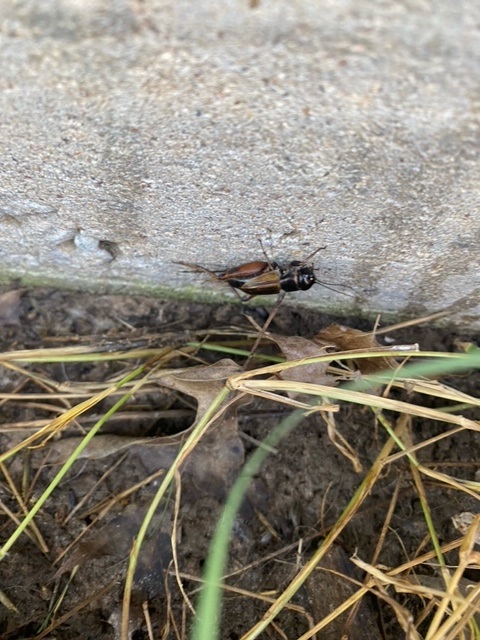Crickets are about 1″ long, dark brown to black with large hind legs used for jumping. Female crickets have a large, sword-like structure, the ovipositor, protruding from the tip of the abdomen. The ovipositor is an egg laying structure.
Crickets feed on plant material and other insects. They can cause damage to seedlings and be destructive to plants when in high numbers. Males can become a nuisance with their sounds (there’s always that one cricket chirping at night when you’re trying to sleep). Crickets can further become a nuisance when masses of them flock to lights at night or when piles of dead crickets form near doorways and other areas, causing a foul odor.
Cricket management is more easily accomplished in the summer months when nymphs, who cannot fly, are present (this is why I am writing this now!). Most people do not try to do anything about crickets until they are in the adult stage and in large numbers.
Before crickets invade your home try some of the following tips:
Turn off lights at night, direct lighting away from the structure or use yellow bulbs which are less attractive to insects. Seal cracks and crevices that give entrance to the structure with sealant. Remove debris that is stacked near the structure. Keep lawn and surrounding landscape tended. Stuff weep holes with copper mesh (this will allow air flow into the wall voids, but will reduce accessibility).
For more information on this or any other agricultural topic please contact the Hopkins County Extension Office at 903-885=3443 or email me at [email protected].









